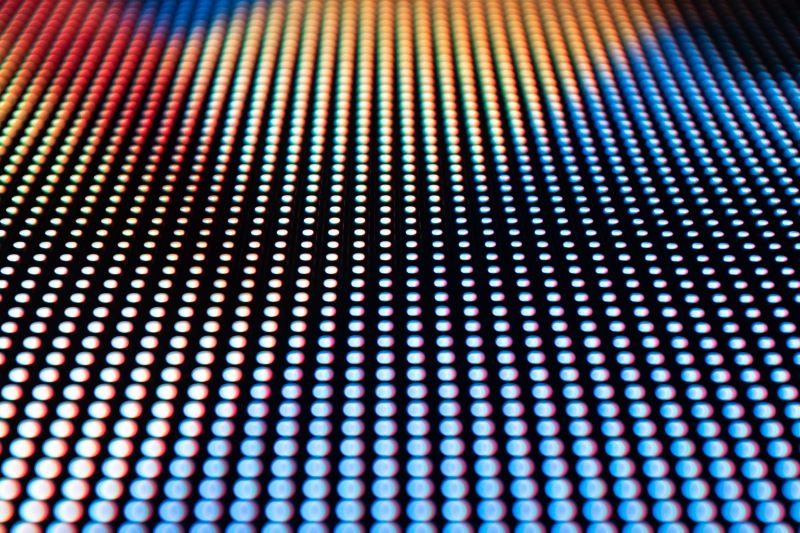Photo by Bernard Hermant | Unsplash
Nobel Prize in Chemistry (2023)
Moungi G. Bawendi, Louis E. Brus and Alexei I. Ekimov
The Nobel Prize in Chemistry in 2023 went to three winners working in American research centres: Moungi G. Bawendi, Louis E. Brus and Alexei I. Ekimov “for the discovery and synthesis of quantum dots”.
Rafał Podeszwa, PhD, DSc, Assoc. Prof. from the Institute of Chemistry, Faculty of Science and Technology, of the University of Silesia in Katowice speaks about the distinction. The scientist explains what quantum dots are as well as their applications.
WERONIKA CYGAN: Professor, what are quantum dots anyway? What properties do they have and how are they synthesised?
PROF. RAFAŁ PODESZWA: Quantum dots are semiconductor nanocrystals. We know them, among others, from transistors, semiconductor systems have been reduced in them to tiny particles a few nanometres in size. With such small sizes, their properties begin to be influenced by size and shape – unlike large crystals, where only their chemical composition is important.
WERONIKA CYGAN: How was the existence of quantum dots discovered? During the Nobel conference it was mentioned that for a long time they existed only in theory and many thought that they would not be observed, let alone used in practice.
PROF. RAFAŁ PODESZWA: Quantum dots were discovered by Alexei Ekimov in the early 1980s while he was examining particles of copper chloride suspended in glass. He observed that their spectrum (and therefore colour) depends on the size of these nanoparticles.
The fact that materials should behave differently when they move to the nanoscale has been known since the very beginning of quantum mechanics, which was developed in the 1920s. The “particle-in-a-box” model that demonstrates this is a teaching tool that we still use to explain the intricacies of quantum mechanics to students. In later years, theorists developed more accurate models, and many of the properties of quantum dots were actually known before their synthesis. However, only after obtaining them could all the complexities be resolved. Before the work of Ekimov, Brus and Bawendi, scientists could not successfully obtain such small objects repeatedly.
WERONIKA CYGAN: While reading the justification for awarding the Nobel Prize to these three scientists, it was mentioned that quantum dots have fascinating and unique properties and their colours depend on their size. How should we understand this second part of the statement about colours? How does size affect colour?
PROF. RAFAŁ PODESZWA: Quantum dots are so small that the electrons in these crystals behave as if they were in a trap. Their waves depend on its size. It’s like the size of an organ’s pipes that determines the sound it emits – the smaller they are, the lower the tone. For quantum dots it is exactly the same, only the vibrations are transmitted in the form of light, not sound. The smaller the dots, the higher the frequency of the light they emit. Large dots emit low-frequency red light, smaller dots emit high-frequency blue light.
WERONIKA CYGAN: The Nobel Committee noted that the discovery laid the foundations for nanotechnology. How has it influenced this field and does it also have applications beyond nanotechnology?
PROF. RAFAŁ PODESZWA: Quantum dots can be treated as something like artificial atoms (sometimes they are also referred to as such), the properties of which can be adjusted by appropriate selection of their size and shape. In the case of classic semiconductors, we have only a few types of atoms to choose from, which determine their properties. Quantum dots mean that we have an almost infinite number of such types of “atoms”, each with different properties. Quantum dots have inspired the synthesis of nanomaterials other than semiconductors, and they also behave differently than their macroscale counterparts. Nanotechnology is like expanding the periodic table to include millions of new elements.
WERONIKA CYGAN: What is the practical application of quantum dots and the possibility of synthesising them? Where can we come across quantum dots “in everyday life”?
PROF. RAFAŁ PODESZWA: Quantum dots are particularly good optical materials, i.e. the kind that emit or absorb light. In everyday life they can be found in QLED displays, where quantum dots increase the contrast, brightness and colour depth of the screens. In addition, they are used to correct the colours of LED lighting, thanks to which we now have LED fluorescent lamps with colours more similar to traditional light bulbs. Their further applications include photovoltaic cells and photodetectors. They are beginning to be used in biology and chemistry in the form of nanocatalysts, which make it easier to control chemical reactions.
WERONIKA CYGAN: Thank you for the conversation.






